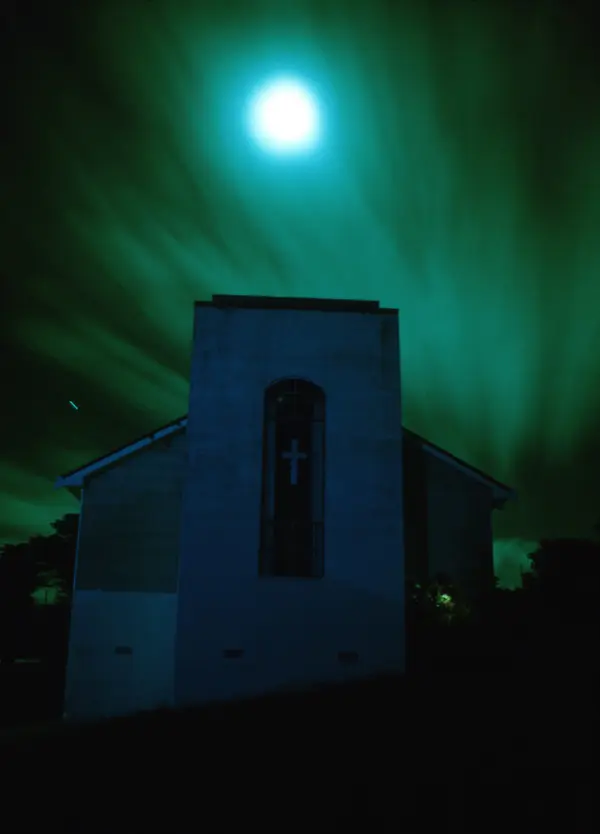49. Infra red church and moon, Baylys Beach
December 8, 2010 8:50 pm

Of course it’s the film that’s infra red, not the church on Sea View Rd (near Dargaville, in Northland). Kodak’s Infrared Ektachrome was a popular film in the 1970s, and illustrated the front cover of a few rock albums. It was also the first slide film I ever used, back in 1974. I took this when visiting a friend at the beach: a moonlight stroll suggested itself, and with a feeble torch we wandered the quiet streets nearby.
The cloud movement is gratifying but there are some puzzling aspects for me now: it must be wide angle but the star trail is uncharacteristically long for 28mm, and the moon looks like a large, stationary lightbulb. I usually avoid shooting straight at the moon (but see 3. Waitakere nikau and the rising moon), however with some haze or cloud around it seems workable – even if the frame has had to be slightly cropped to remove lunar flare.
Some torchlight is evident on the right hand side of the building, where Caron is just visible, shining her torch into a hydrangea bush. Torchlight being so much stronger than moonlight, I soon asked her to turn the beam off. Exposing this sort of scene is like a play in two acts: the torch paints some part or somebody with light for the short first act – the time depends on torch brightness and distance to subject – and then the exposure continues in a longer second act, gathering in more light for the dimmer backdrop.
Infrared Ektachrome was a high contrast film, so fairly unforgiving in exposure terms. It worked best with a deep yellow or red filter, at 100 ISO, but under tungsten lighting the filter could be discarded, and an f-stop thereby gained. The infra red part was only a wee slice of spectrum beyond the visible, while the other emulsion layers simply displaced the colours. The full effect is not displayed here.
Posted by Barney Brewster
Tags: church, clouds, film, infra red, long exposure, moonlight, moonlight photography, Northland, Pentax, people, stars, torchlight
Categories: Night photography
